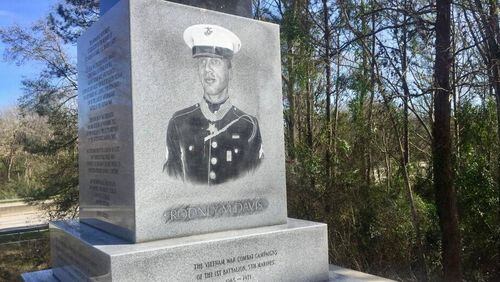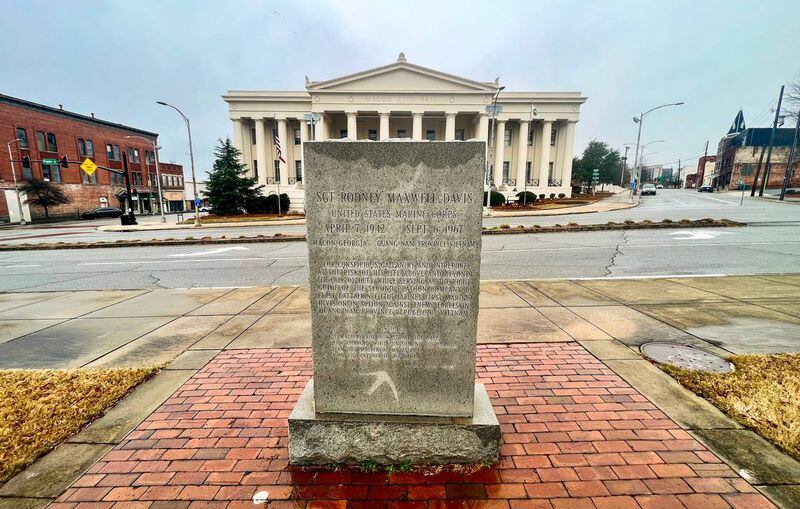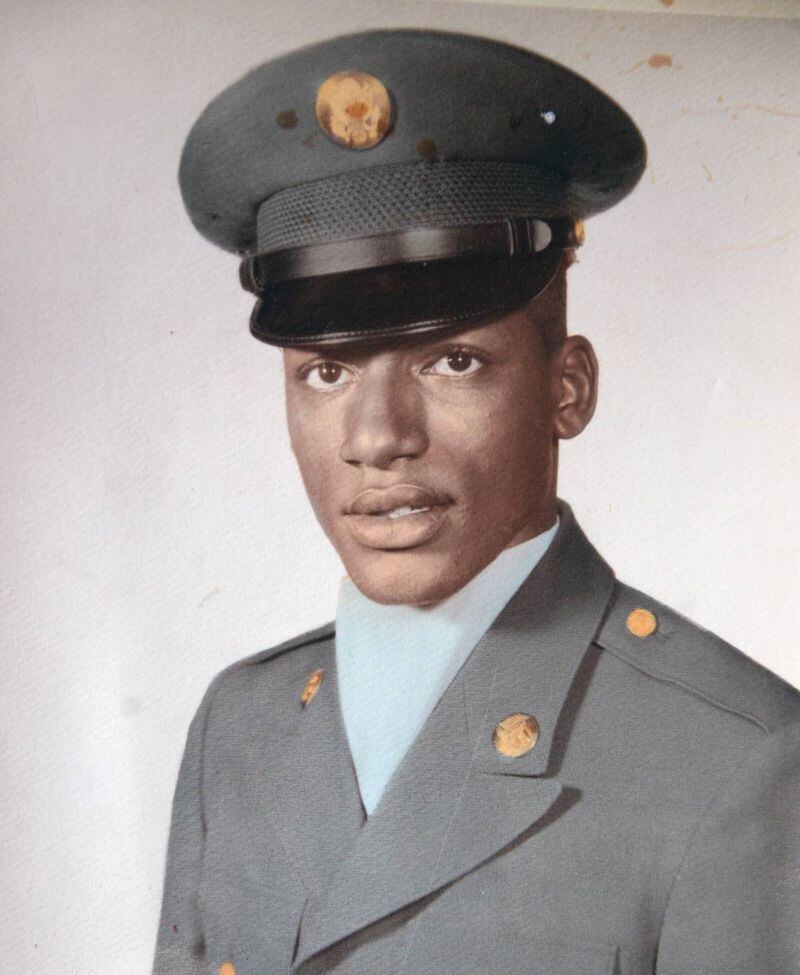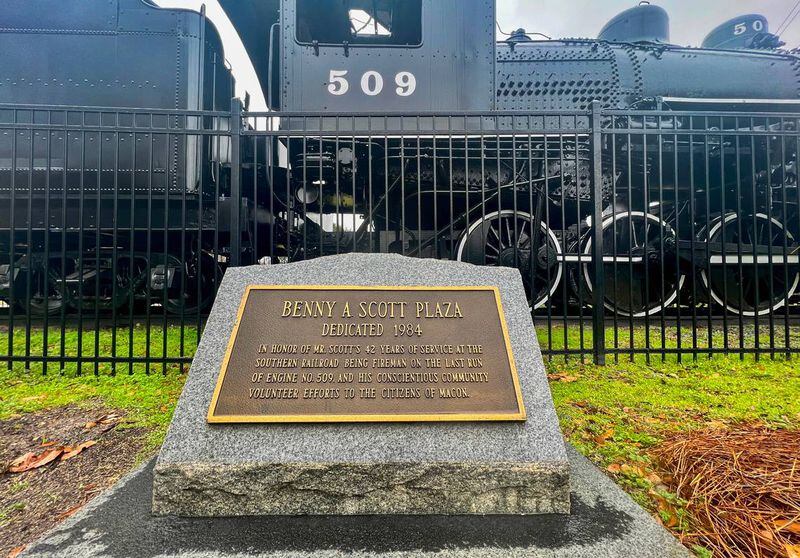This story was originally published by The Telegraph.
Macon is a county with a vibrant and diverse history, and Black History Month offers a chance to celebrate icons ranging from Little Richard to Jo Ann Gibson Robinson to Charles Henry Douglass.
Sometimes overlooked, however, are the monuments dotting the county that pay testament to a history of Black veterans. Here are three stories worth remembering:
Rodney Davis Jr.
Sgt. Rodney Davis Jr., is the Macon’s only Medal of Honor recipient. His memorial is in Rosa Parks Square on Poplar Street in downtown Macon.
Davis’s picture, though carved skillfully in granite and preserved next to the grassy area of the small park, does not tell the story of how he earned his medal.
Born in 1942 in Macon, Davis grew up in the city before enlisting in the U.S. Marine Corps in 1961. He served in the Vietnam War, where he earned the Medal of Honor for a heroic feat that eventually spawned a book “The Making of a Hero,” by John Hollis.
Credit: Jason Vorhees
Credit: Jason Vorhees
Davis was with his unit in the Quang Nam province of Vietnam in 1967 when they were attacked, according to soldiers interviewed by Hollis. Attackers pinned Davis’ platoon down in trenches, surrounding them with mortars and gunfire. When a grenade flew into the trenches, Davis threw himself on top of it.
Leaping on the grenade saved at least five other members of the platoon, but the blast killed Davis at 25. His Medal of Honor was awarded posthumously to his widow, Judy Davis, by Vice President Spiro T. Agnew. It is on display in the Tubman Museum in Macon.
Davis’s monument is accompanied by Blue Star and Gold Star memorials, which honor those who have served in the military and the families of veterans who died in service. He also has a monument in historic Linwood Cemetery, a site that is the resting place of more than 4,000 Black Maconites.
Calvin Taylor
Calvin Taylor’s story is another of sacrifice, but also one accentuated by memories of childhood in Macon and leading by example.
Taylor was born in Macon in 1948 and grew up in the Stinsonville area near Forest Hill Road with five brothers. One brother, Harry, told the Telegraph in 2021 about Calvin’s childhood habits: playing Little League baseball, licking his mother’s pie pans and arguing with siblings.
Credit: Jason Vorhees
Credit: Jason Vorhees
Before long, Calvin sought “adventure,” his mother said in the 2021 interview. He was a curious kid, she thought, and he and a group of older friends volunteered to serve at the beginning of the Vietnam War. He was 17 at the time, and would carry on a tradition of family members serving that included his father
In 1967, at 18 years old, Calvin was killed in action during his first tour in Vietnam. He was awarded a Purple Heart posthumously.
“I don’t think he regretted a moment of going into the service,” Harry said in 2021, “and I was just thinking if he had to do it all over, I think he would go in again.”
A small park was dedicated to Calvin in 2012 in the Stinsonville neighborhood. It features a bench, flag and plaque remembering Calvin’s childhood and service.
Benny Scott
Another Macon veteran, this one from a different war, is remembered by a small green space near downtown Macon. Benny Scott’s story is a unique one that entails a different kind of service after his time with the military.
Scott was born in Georgia in 1915 and was an active community member in Macon before he served in World War II. He was stationed in both Casablanca, North Africa and Naples, Italy in the 1940s, studying to get a degree while serving his country overseas.
Credit: Jason Vorhees
Credit: Jason Vorhees
Scott used his degree after the war to become the first Black locomotive engineer for the Norfolk Southern Railway System, according to his obituary. He paved the way for other members of the Black community to find employment with the railway.
Scott served as a railroad engineer for more than 40 years and also contributed to community organizations including the Boy Scouts, the American Cancer Society, the Tubman Museum, Middle Georgia Regional Libraries and others.
Scott died in 2005 after a life of community service in Macon. A plaza in front of a Norfolk Southern train in Carolyn Crayton Park was named in Scott’s honor in 2012 to remember how his service in the military led to his service in the community.
Credit: The Telegraph
Credit: The Telegraph
MEET OUR PARTNER
Today’s story comes from our partner, The Telegraph in Macon. The Telegraph provides daily coverage of community news, events, and sports in Macon and middle Georgia at macon.com.
If you have any feedback or questions about our partnerships, you can contact Senior Manager of Partnerships Nicole Williams via email at nicole.williams@ajc.com.
About the Author











